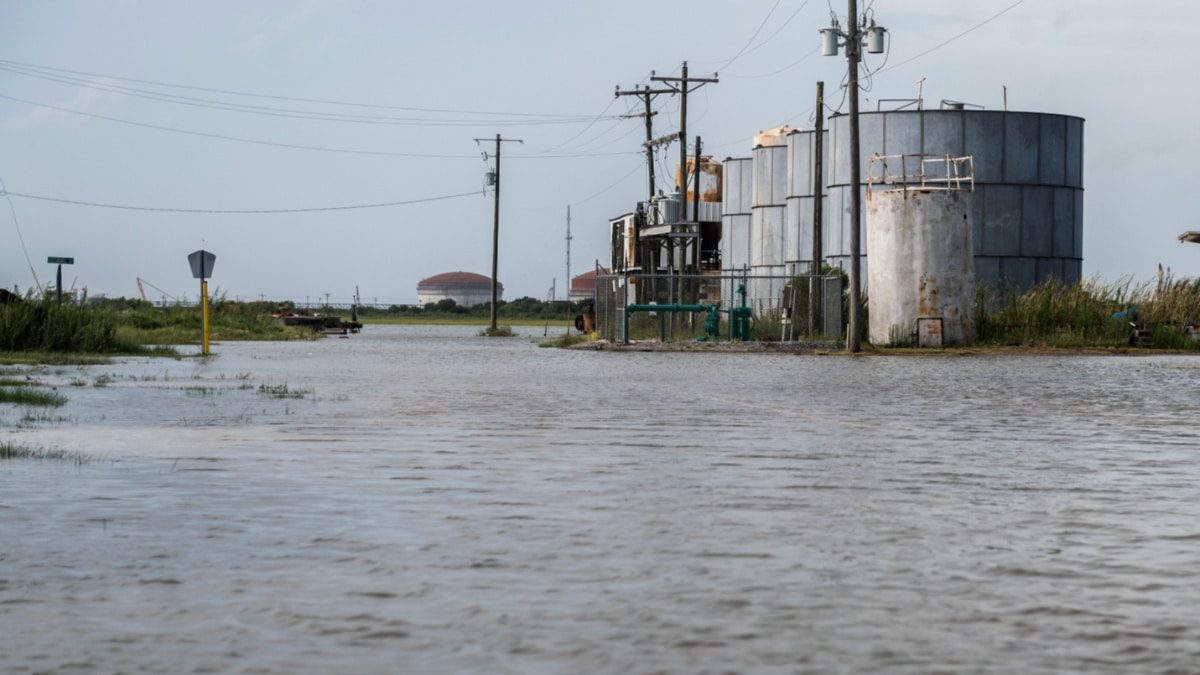
Pollution From Oil Wells and Industrial Sites Hit by Hurricane Laura Remains Unknown

An LNG processing plant is seen in Cameron, Louisiana on August 26, 2020. Andrew Caballero-Reynolds / AFP / Getty Images
The full extent of the damage wrought by the storm formerly known as Hurricane Laura will only continue to grow as the weakened storm continues inland and pollution from petrochemical plants and other industrial sites is discovered.
More than 1,400 active oil wells sit in the path Hurricane Laura carved through Louisiana’s coastline, some of which are decades old and especially vulnerable due to the state’s receding coastline.
“I have a lump in my throat thinking about them,” Bob Bea, a specialist in catastrophic risk management and former well manager for Shell, told the New Orleans Advocate.
The environmental damage caused by leaking wells, as well as from pollution spread from other damaged industrial sites, may not be discovered for days as officials focus on search and rescue tasks in the wake of the storm.
The storm’s rapid intensification, fueled by exceptionally warm sea-surface temperatures, likely made matters worse but overconfidence from regulators and oil companies is also to blame, according to Bea.
“When it comes to how we manage our platforms, pipelines, and wells, we here in the U.S. are not world leaders in risk management,” he said.
“We’re not Canada or Norway. We’re not even a Third World country.”
For a deeper dive:
New Orleans Advocate; Potential industrial pollution: AP, New York Times, Wall Street Journal, Buzzfeed
For more climate change and clean energy news, you can follow Climate Nexus on Twitter and Facebook, and sign up for daily Hot News.
- Pence Offers 'Prayers' as Hurricane Laura Hits Gulf Coast While ...
- Pence Dismisses Climate Action at RNC as Hurricane Hits Gulf Coast
- 'Unsurvivable Storm Surge' Expected as Hurricane Laura Hits Gulf ...
- Texas Refineries Released Tons of Pollutants During Storm - EcoWatch

 233k
233k  41k
41k  Subscribe
Subscribe 